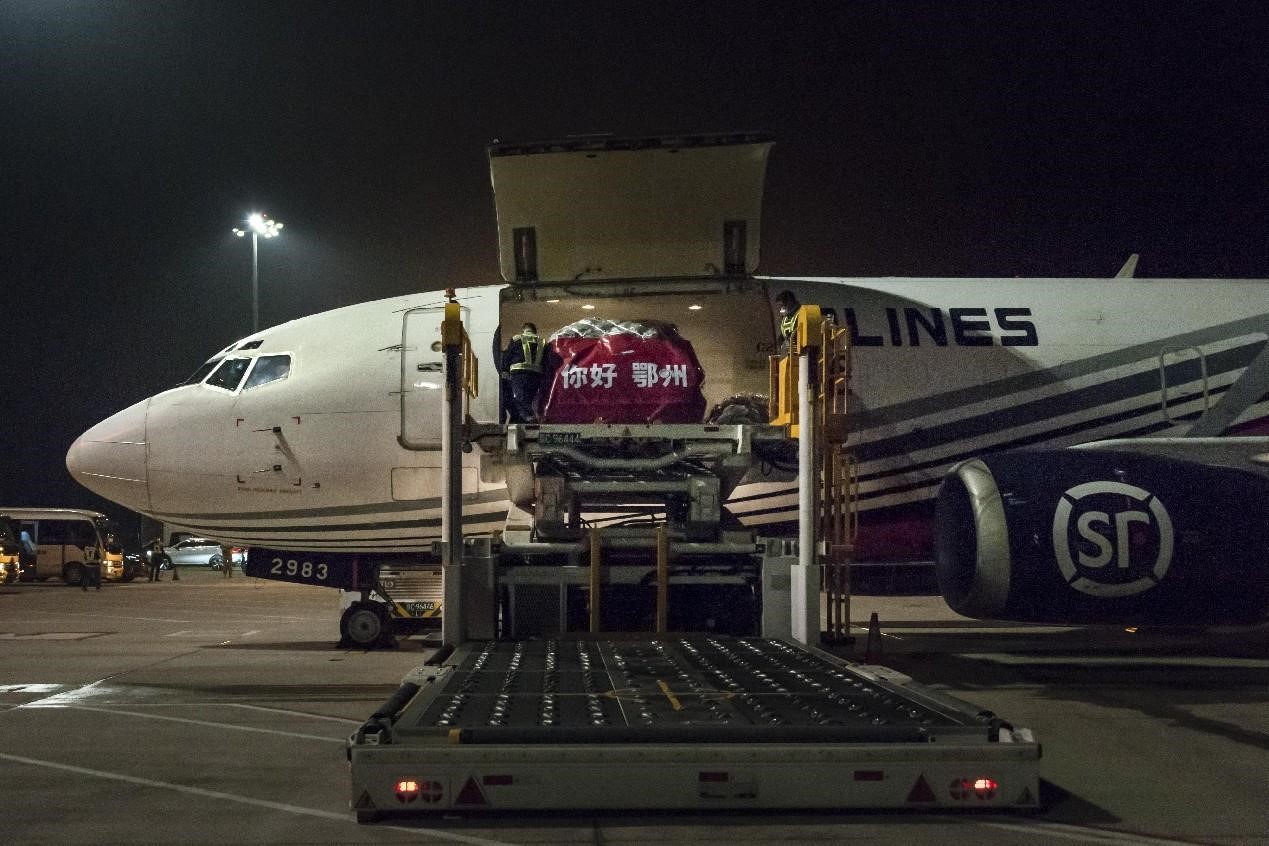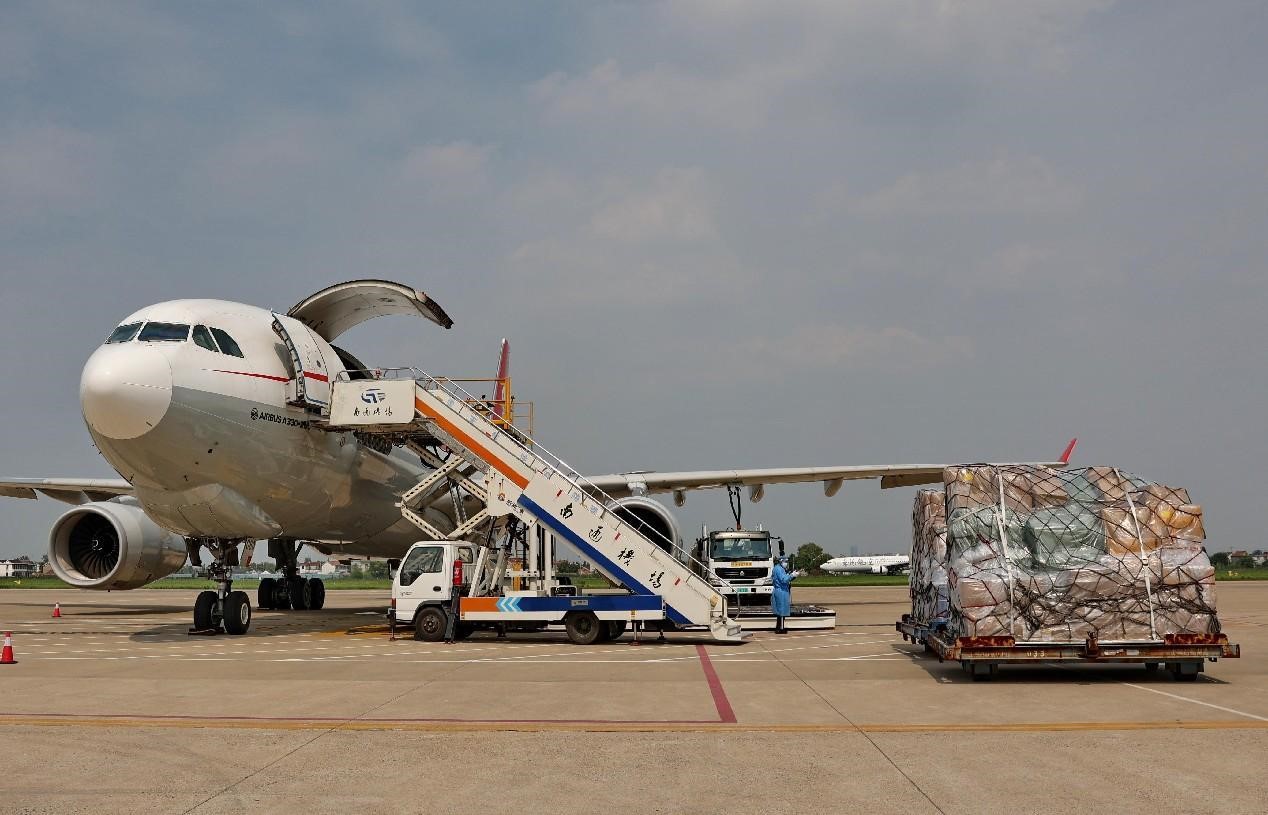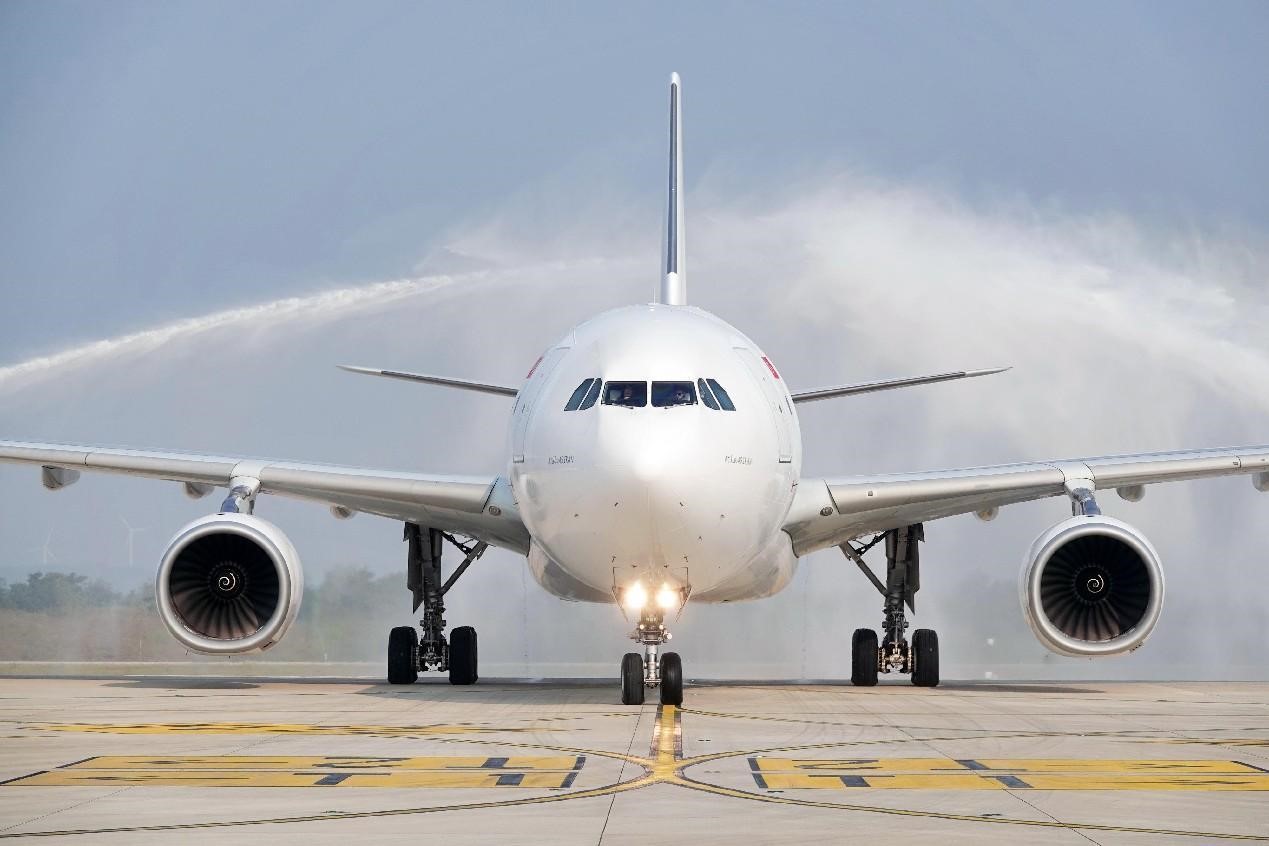China sees continuous development of air cargo industry

Ezhou Huahu Airport in central China's Hubei province, which is China's first professional cargo airport, starts operation on Nov. 27, 2022. Photo shows a fully loaded Boeing 737 cargo plane landing at the airport. (People's Daily Online/Hu Zhanjun)
Sixty tons of Boston lobsters were packed in reefer containers immediately after being captured in the U.S. and shipped to China by China's Eastern Air Logistics (EAL). On the day after the next, they arrived at a seafood wholesale market in Shanghai.
"It takes as short as 36 hours for Chinese consumers to have the tasty seafood half a world away delivered to their dining tables," said Wang Jianmin, deputy general manager of EAL.
The efficient service of EAL is a miniature of the rapid development of China's air cargo industry. While the global air cargo industry has been facing huge impacts in recent years, China's air cargo business has achieved hard-won progress.
The growth of the country's air cargo handling capacity had a rebound and turned positive in 2021. According to preliminary statistics, about 6.08 million tons of cargo and mail were transported by air last year in China, or 80.7 percent of the 2019 level. In the first three quarters of 2022, over 1.98 million tons of cargo and mail were shipped by air internationally, up 6.1 percent from the same period in 2019.
At present, China's air cargo market is in stable recovery, and there has been an obvious improvement in the shipping capacity, said an official with the Civil Aviation Administration of China (CAAC).
"The cargo handling capacity of the airport in Zhengzhou, central China's Henan province has expanded vigorously in recent years, reaching over 700,000 tons in 2021 from 151,000 tons in 2012, which makes the airport one of the largest 40 cargo airports in the world," said Chang Xiaotao, president of an air logistics research institute under Henan Province Airport Group.
A CAAC official noted that China has about 5,000 international cargo flights each week, reaching more than 120 cities in 53 countries. The country's airline network is currently going through accelerated recovery, the official added.

Staff members of Nantong Xingdong International Airport, east China's Jiangsu province, load an all-cargo aircraft bound for Tokyo, Japan, July 14, 2022. (People's Daily Online/Xu Congjun)
The CAAC has worked constantly over the recent years to make the logistics sector more intelligent, increase the frequency of cargo flights, improve the efficiency of approval of cargo flights and streamline cargo route licensing. These efforts have reinforced the top-level design of the air cargo industry and expanded the supply of key resources.
"We used to ship cargo in the cargo hold of passenger airliners. However, the number of passenger flights was decreasing before, so we turned passenger aircraft into cargo aircraft to utilize idle capacity," said Li Ning, deputy general manager of the sales department of China Southern Air Logistics Company. Last year, over 9,000 cargo flights were made by the passenger aircraft of China Southern Airlines, transporting nearly 170,000 tons of cargo.
The revenue from cargo businesses accounted for 12.88 percent to 19.6 percent of the total revenue of China Southern Airlines, Air China and China Eastern Airlines in 2021, much higher than the figures between 3.17 percent and 6.13 percent in 2019.
Many airlines said expanding cargo businesses would effectively relieve their burden and increase profit, and it also helps expand cash flow and improve business performance.
The development of the air cargo business not only betters airlines' performance, but also strengthens areas of weakness of the civil aviation industry in the long run.
"As of the end of last October, China had 215 all-cargo aircraft, accounting for 5.2 percent of the freighter fleet in the Chinese civil aviation sector. In general, the country's air cargo transporting capacity is still not strong enough due to the lack of cargo flights and international cargo shipping routes," said an official with the CAAC.

A ceremony is held at Yantai Penglai International Airport, east China's Shandong province for the maiden flight of a cargo route between Yantai and Istanbul, Türkiye, Sept. 18, 2022. (People's Daily Online/Tang Ke)
The official noted that strengthening areas of weakness of the civil aviation industry will expand the sector's service and supply capacity, and improve its international influence and competitiveness.
China has achieved positive progress in the construction of air cargo shipping infrastructure over the past five years, expanding air freight capacity by more than 6 million tons. In the future, the country will further strengthen the construction of air cargo shipping facilities.
According to preliminary statistics, of the new or expansion projects of aviation hubs currently underway or about to commence in the first half of this year, the total area of shipping facilities has exceeded a million square meters, and there are about 200 cargo aprons. A total of 12 billion yuan ($1.77 billion) has been invested in these projects.
The development of the air cargo business, apart from benefiting the civil aviation industry, also promotes the building of relevant industrial clusters.
The output of the electronic information industry generated in Zhengzhou Airport Economy Zone in Henan province now accounts for nearly 80 percent of the province's total; the airport economic demonstration zone in Hangzhou, east China's Zhejiang province is developing healthcare and other emerging industries around the Hangzhou Xiaoshan International Airport. Besides, a world-class trade and tourism complex is currently under construction in the Beijing Daxing International Airport Economic Zone.
More and more industrial and innovation hubs are taking shape around airports across China, injecting new impetus into the country's high-quality economic development and high-level opening up.
Photos
Related Stories
Copyright © 2023 People's Daily Online. All Rights Reserved.









